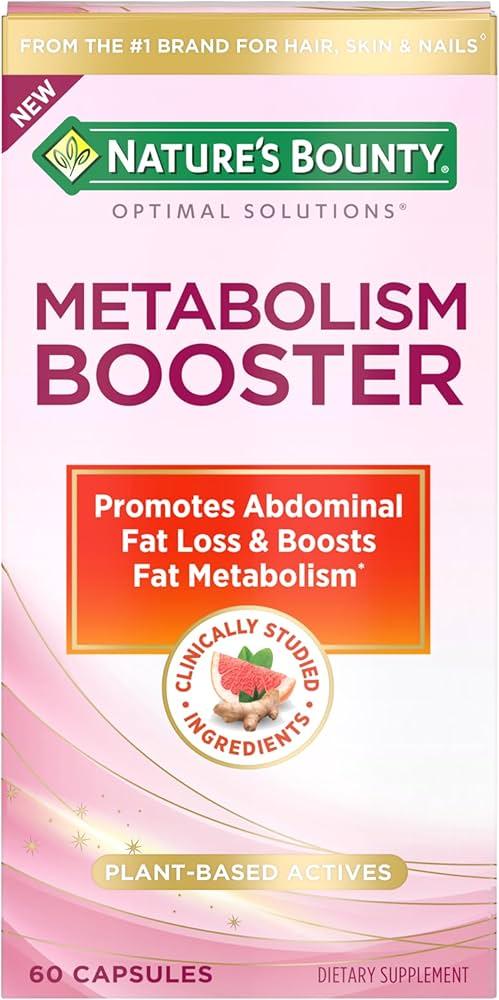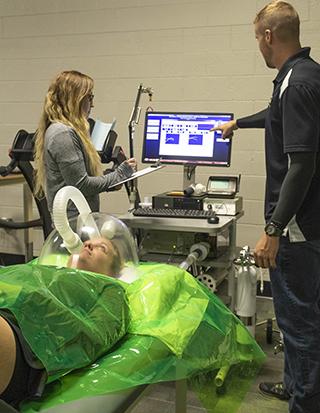In the pursuit of optimal health and fitness, many find themselves navigating a labyrinth of diets, supplements, and workout regimens, all in search of the elusive “metabolism booster.” With promises of faster fat loss and increased energy, these boosters frequently enough entice those looking to enhance their metabolic performance. But how effective are they really? In this article, we delve into the science behind metabolic boosters, examining before-and-after results garnered from rigorous metabolic testing. By dissecting personal testimonies and empirical data, we aim to uncover the truth behind these popular products and strategies, helping you make informed decisions on yoru journey toward metabolic vitality. Join us as we sift through the evidence to illuminate what truly works—and what might just be wishful thinking.
Understanding Metabolism: the Science Behind Your Energy Levels
Your metabolism is the intricate biological process that dictates how your body converts food into energy and regulates your energy levels throughout the day. It’s not just about burning calories; it involves a complex interplay of hormones, enzymes, and biochemical pathways. When analyzing metabolism boosters, metabolic testing can provide valuable insights. by measuring your resting metabolic rate (RMR), wich reflects how many calories your body burns at rest, we can observe the effects of various interventions on energy expenditure.
Through controlled studies and before-and-after comparisons, we can assess the impact of different dietary changes, exercise routines, and supplements on metabolic performance. The following factors frequently enough emerge from metabolic testing data as pivotal in boosting metabolism:
- Protein Intake: Enhances thermogenesis and increases muscle mass, which helps burn more calories.
- High-Intensity Interval Training (HIIT): Known to elevate the metabolism for hours after workouts.
- Hydration: Improves metabolic efficiency and supports energy production.
Analyzing these before-and-after results in metabolic testing reveals not only how effective certain boosters can be but also highlights individual variance.As an example, a simple table demonstrating three different individuals’ metabolic responses to the same dietary change can shed light on personalized approaches:
| Individual | Dietary Change | RMR (Before) | RMR (After) |
|---|---|---|---|
| Alice | Increased Protein | 1400 kcal/day | 1500 kcal/day |
| Bob | HIIT Training | 1600 kcal/day | 1800 kcal/day |
| Carol | Sufficient Hydration | 1500 kcal/day | 1550 kcal/day |

Real-World Results: Examining Before and After Metabolic Testing
When individuals embark on their journey to enhance their metabolism, metabolic testing serves as a valuable benchmark. Conducting tests before and after implementing various metabolism boosters allows one to visualize tangible changes in metabolic function.Key factors assessed during these tests frequently enough include:
- Resting Metabolic Rate (RMR)
- Caloric Expenditure
- body Composition Analysis
- Respiratory Quotient (RQ)
In reviewing the results from metabolic testing, notable variations begin to emerge after a few weeks of dedicated effort.Such as, an individual may see an increase in their RMR, indicating that their body is efficiently burning more calories at rest. The following table illustrates illustrative before-and-after changes in metabolic markers:
| Metabolic Marker | Before (Calories/day) | After (Calories/day) |
|---|---|---|
| Resting Metabolic Rate | 1,400 | 1,600 |
| Caloric Expenditure During Exercise | 300 | 400 |
| Body Fat Percentage | 25% | 22% |
Such findings not only validate the effectiveness of tailored nutrition and exercise plans but also highlight the vital role of metabolic testing in tracking progress. Individuals can adjust their strategies based on these insights, maximizing their potential for sustained metabolic enhancement.

Effective Strategies: Tailoring Your Diet and Exercise for Optimal Metabolism
To effectively boost your metabolism, it’s crucial to understand that one size does not fit all. Tailoring your diet to meet your unique caloric needs and activity levels is key. Focus on incorporating whole foods that are rich in nutrients,such as:
- Lean Proteins: Chicken,fish,beans,and legumes.
- Fiber-Rich Carbohydrates: Quinoa, brown rice, whole grains, fruits, and vegetables.
- Healthy Fats: Avocado, nuts, seeds, and olive oil.
This balanced approach can definitely help stabilize blood sugar levels, thus enhancing metabolic efficiency.Additionally, consider meal timing and portion control; spacing your meals evenly throughout the day can prevent energy crashes and support sustained metabolic activity.
When it comes to exercise, a combination of strength training and high-intensity interval training (HIIT) proves moast beneficial for metabolic enhancement. scheduling your workouts to include:
- Resistance Training: Engages muscles that require more energy to maintain, boosting resting metabolic rate.
- HIIT: Alternating bursts of intense exertion with recovery periods can effectively elevate metabolism post-exercise.
Tracking your progress with metabolic testing can also provide insights into your body’s responses, allowing you to adjust your strategies for maximum efficiency. Regular reassessment ensures that your personalized plan remains aligned with your evolving fitness levels and goals.

The Role of Supplements: What Works and What Doesn’t in Boosting Metabolism
In the quest for a faster metabolism, many individuals turn to supplements with high hopes, only to be met with varying levels of success. Caffeine, frequently enough found in energy drinks and supplements, can give a temporary boost to metabolic rate by increasing thermogenesis and fat oxidation. Green tea extract, another popular choice, contains catechins and caffeine, which studies suggest may enhance exercise performance and help burn fat. Othre common contenders like L-carnitine and CLA (Conjugated Linoleic Acid) have mixed reviews, with some research indicating modest effects while others show no significant changes in metabolic rates. It’s essential to approach these options with a discerning eye and recognize the importance of pairing any supplementation with a balanced diet and consistent physical activity for optimal results.
While some supplements may offer benefits, avoiding those with unsupported claims is equally crucial. Supplements such as chromium picolinate and raspberry ketones have gained popularity but lack ample scientific backing for their efficacy in boosting metabolism.Understanding the body’s response is fundamental; hence,metabolic testing can provide insights into how these supplements affect individual metabolism. The table below summarizes selected supplements with their proposed effects and supporting evidence:
| Supplement | Proposed Effect | Evidence |
|---|---|---|
| caffeine | Enhances thermogenesis | Moderate support |
| Green Tea Extract | Increases fat oxidation | Good support |
| L-Carnitine | Facilitates fat metabolism | Mixed results |
| CLA | May aid in fat loss | Limited support |
| Chromium Picolinate | Regulates blood sugar | Poor support |
Concluding Remarks
our exploration of metabolism boosters, supported by comprehensive metabolic testing, sheds light on the promise and pitfalls of enhancing metabolic health. The before-and-after results reveal a spectrum of reactions to various supplements and lifestyle interventions, underscoring that what works for one individual may not hold true for another. As we navigate the constantly evolving landscape of wellness and health optimization, it’s crucial to approach metabolism boosters with patience and curiosity.
By relying on a combination of science-backed strategies and personalized approaches, we can embark on our unique journeys towards better metabolic function. Remember, the key to long-lasting results lies in understanding our bodies, listening to their signals, and making informed choices rather than chasing fleeting trends. ultimately, the quest for a more efficient metabolism is not just about the numbers, but about fostering a balanced lifestyle that empowers us to thrive. Thank you for joining us on this analytical journey, and may your pursuit of metabolic wellness be both enlightening and rewarding.


